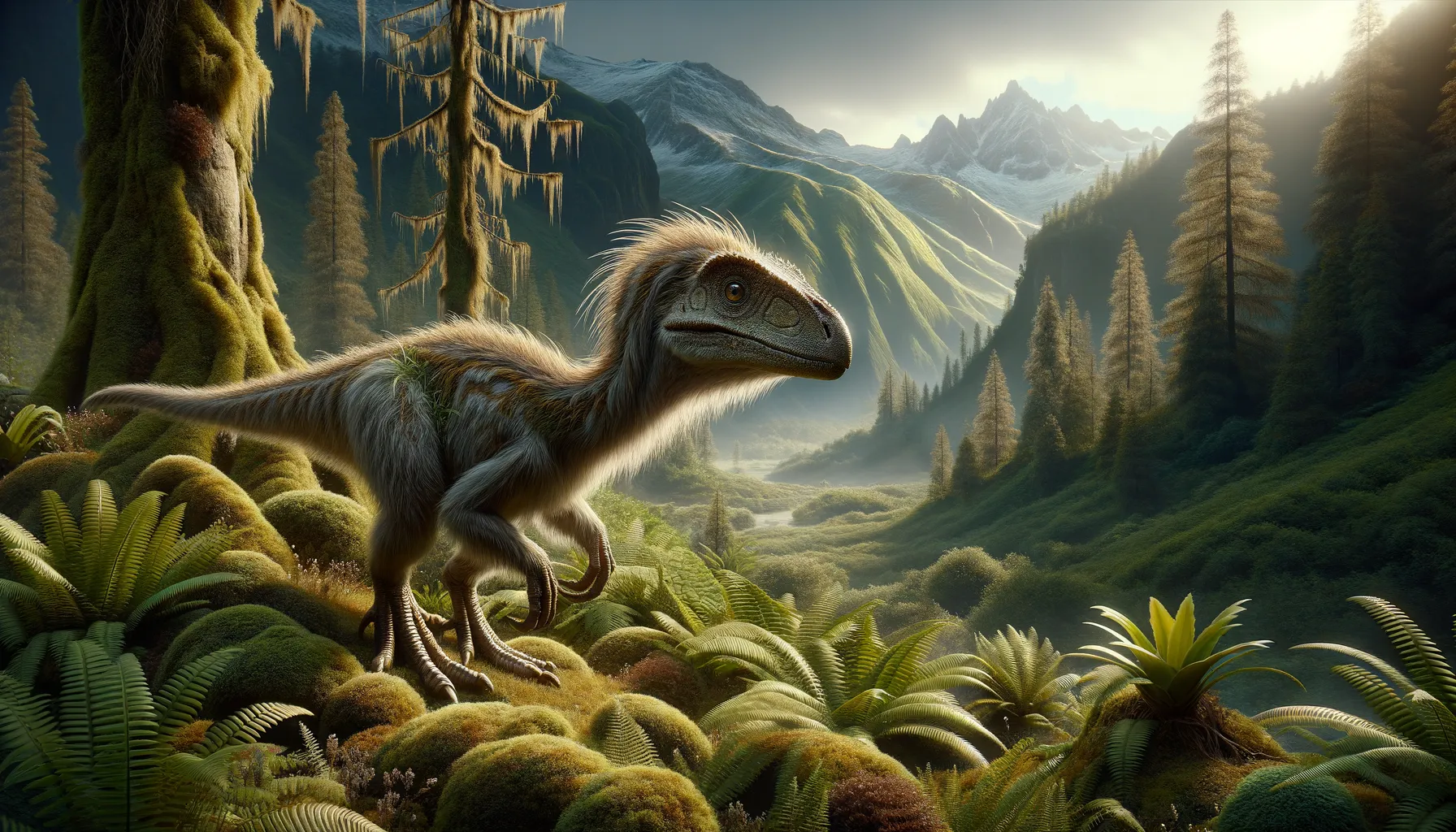
Heyuannia
Small, swift, and beak-clad wonder!
Period
Cretaceous
Length
Roughly 1.5 meters (5 feet) long.
Height
Around 1 meter (3.3 feet) tall.
Weight
Approximately 20 kilograms (44 pounds).
Heyuannia was an oviraptorid dinosaur that lived during the Late Cretaceous period. It was a relatively small, bird-like creature that primarily inhabited what is now China. The structure of its beak suggests it was omnivorous, feeding on a mix of plants and small animals. Heyuannia's relatively light weight and moderate speed indicate it could maneuver quickly in its lush, forested environment.
Diet
Heyuannia had an omnivorous diet, meaning it likely consumed a variety of foods. Its beak structure suggests it could crack open seeds or nuts and possibly hunt small animals like insects. The diverse diet helped Heyuannia adapt to its environment, making it a flexible feeder.
Hunting
Heyuannia was not a major predator but likely foraged for small animals and insects. Its hunting behavior was more opportunistic, focusing on easily accessible prey rather than active pursuit. Its beak was adapted to grasp and process a variety of small foods.
Environmental challenges
Heyuannia lived in a dynamic ecosystem with varying climates and vegetation over time. It had to adapt to seasonal changes which affected food availability and habitat conditions. Competition with other species for resources would have been a constant challenge. Predators in the area also posed a significant threat to its survival.
Speed
Moderate and likely adapted for short bursts.
Lifespan
Estimated to be around 20 to 30 years.
First discovery
Discovered in 1999 in Guangdong, China.
Fun Facts
- Heyuannia was a small dinosaur that lived during the Late Cretaceous period, around 70 million years ago.
- It was an oviraptorid, which means it was closely related to the famous 'egg thief' dinosaur, Oviraptor.
- Heyuannia was a feathered dinosaur, and while it couldn't fly, its feathers were likely used for display or keeping warm.
- Fossils of Heyuannia have been primarily found in the Guangdong Province of China.
- Unlike some of its carnivorous relatives, Heyuannia might have had a more varied diet, possibly including plants and small animals.
- Its name translates to 'Heyuan lizard,' named after the city of Heyuan where its fossils were first discovered.
- Heyuannia had a toothless beak and a short tail, which made it somewhat resemble modern birds.
Growth and Development
Heyuannia likely grew rapidly during the early stages of its life, as seen with many dinosaurs of its size. It went through several growth spurts to reach full maturity, which it might have achieved within a few years. The faster growth would have helped it avoid predators by reaching a less vulnerable size more quickly. Its development would involve changes in diet and habitat use as it aged.
Habitat
Heyuannia lived in a region that likely featured dense forests and woodlands. These areas provided cover and diverse food sources necessary for its survival. The forested habitat offered protection from larger predators and a rich supply of plants and small prey. Seasonally, the habitat could have undergone significant changes, influencing Heyuannia’s movements and behavior.
Interaction with other species
Heyuannia likely interacted with both predator and prey species in its environment. It would have competed with other herbivorous and omnivorous dinosaurs for food resources. Social or territorial interactions among its own species could have been part of its daily life. Fossil evidence does not indicate if it had any symbiotic relationships with other species.
Natural lifespan
Heyuannia’s natural lifespan was likely around 20 to 30 years.
Reproduction
Heyuannia reproduced by laying eggs, likely in ground nests similar to modern birds. It probably displayed some form of parental care, possibly guarding or incubating the eggs. Fossil evidence of closely related species shows nesting colonies, suggesting Heyuannia might also have nested in groups. The reproductive strategy would have focused on producing multiple offspring to ensure survival of the species.
Social behaviour
Heyuannia might have exhibited some level of social behavior, possibly living in small groups for certain parts of the year. Group living would have advantages such as increased vigilance against predators and efficiencies in foraging. Social structures could include adults caring for young, but definitive social patterns remain unknown. Communication could have involved visual displays, as suggested by its feathered body.
Fossil locations
Fossils of Heyuannia have been found primarily in the Guangdong province of China. The region has provided well-preserved fossils giving insight into its physiology and lifestyle. Guangdong is known for its rich fossil beds from the Late Cretaceous, offering important clues about dinosaur diversity and environment. Other notable fossil finds in the area include those of related oviraptorid species.
